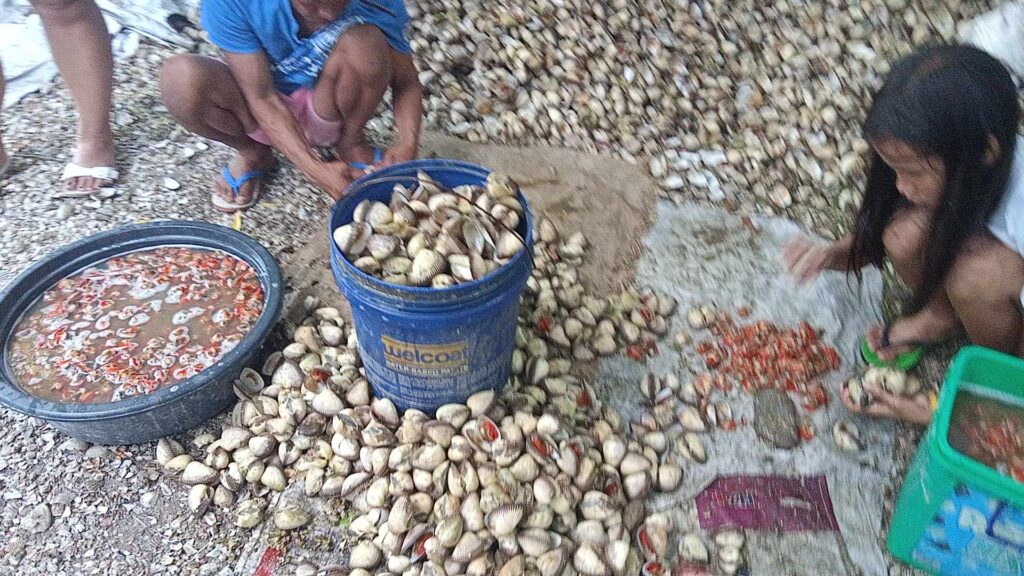
Some of the shellfish confiscated in Madridejos, Bantayan after authorities confirmed the presence of red tide algae there on October 21, 2023. | Photo from Madridejos – Municipal Agriculture Office / Facebook
CEBU CITY, Philippines – Residents and fisherfolk in Madridejos town, Bantayan Island in Cebu are discouraged from collecting seashells and eating alamang as the municipality’s seawater has been contaminated with red tide algae.
The municipal government of Madridejos announced that experts from the Bureau of Fisheries and Aquatic Resources in Central Visayas (BFAR-7) confirmed the presence of red tide in their seawaters.
In turn, they issued an advisory on October 21, warning their constituents not to harvest and consume shellfish in the meantime. These included oysters (talaba), scallops, cockles (litob), mussels (tahong), clams (halaan), and acetes species (alamang).
Following results from BFAR-7’s laboratory tests, the Municipal Agriculture Office in Madridejos has conducted regular inspections in markets and coastal areas, in which they also confiscated shellfish and alamang.
Mayor Romeo Villaceran also vowed to provide assistance to affected fisherfolks during a meeting with them last Sunday, October 22.
What is red tide?
Based on resources from BFAR, red tide is a type of algal bloom in which microscopic algae grow and multiply faster than usual, to the extent that the water’s colors slowly turn red.
Red tide is considered harmful algal blooms, according to the National Oceanic and Atmospheric Administration of the United States government. It produces deadly biotoxins that, when ingested, may cause Diarrhetic Shellfish Poisoning or Paralytic Shellfish Poisoning, which both can be fatal.
Meanwhile, the local government of Madridejos assured residents that other seafood such as fish, shrimp, crabs, and squid remained safe for consumption, as long as they were thoroughly and properly cleaned.
Madridejos is a fourth-class municipality and is part of the Bantayan group of islands, located 140 kilometers northwest of Cebu City.
/bmjo
RELATED STORIES
Red tide warning raised in coastal waters of Daius and Tagbilaran City in Bohol
Red tide still detected in parts of Bohol, Leyte, other areas in Visayas, Mindanao